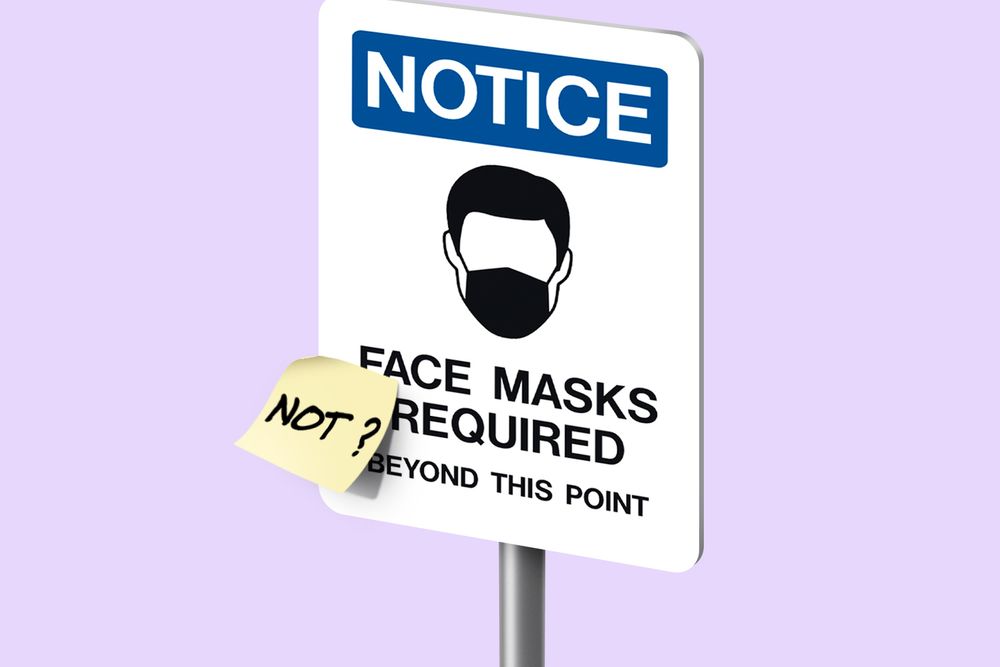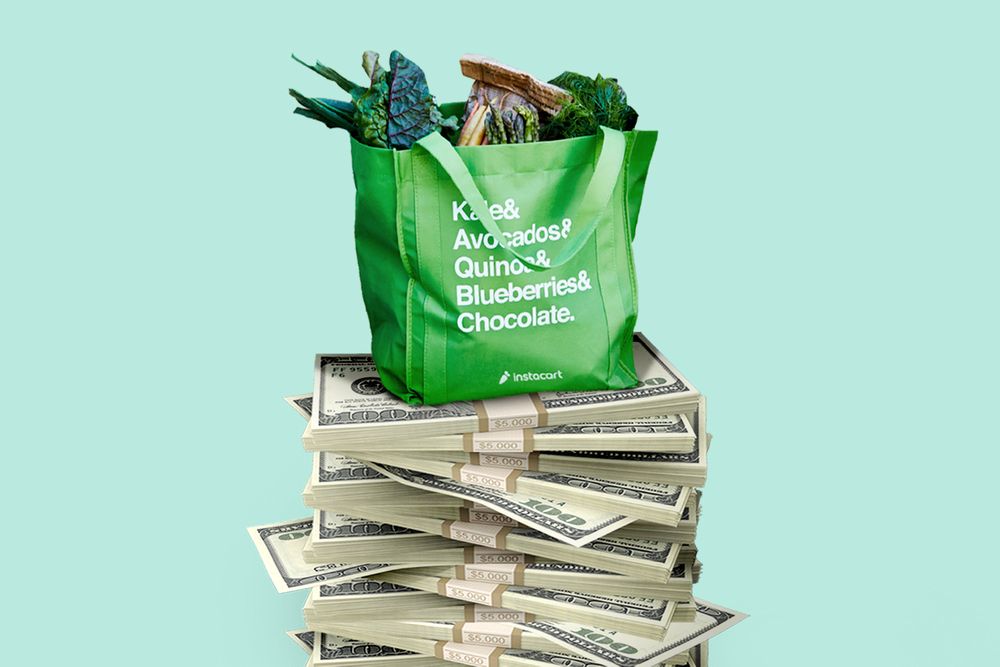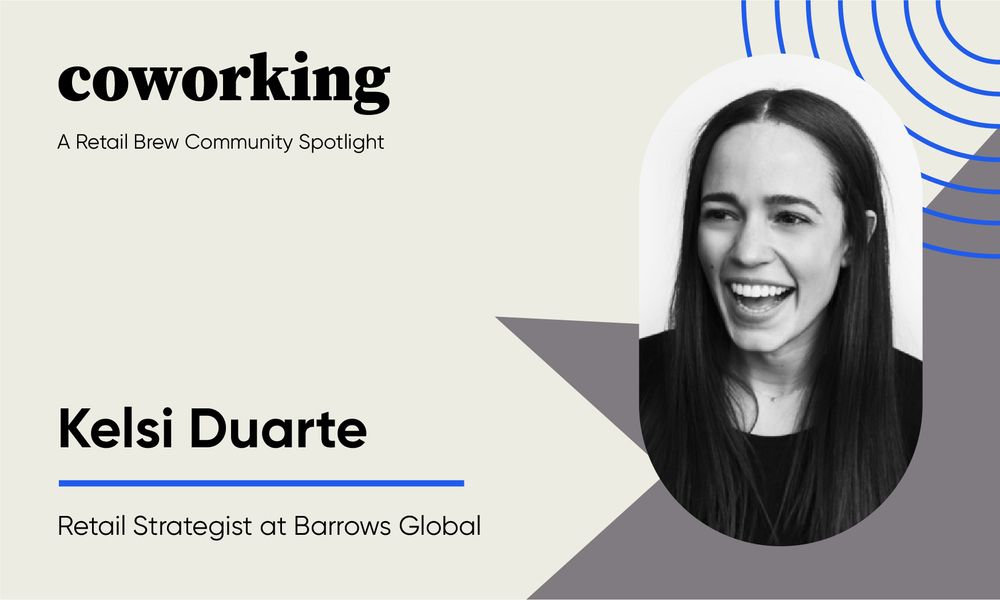|
Drumroll, please. We’re thrilled to share that a third writer is joining our team! Please welcome Julia Gray, who’s joining the Retail Brew crew after writing for WaPo, The Ringer, Pitchfork, and more. Before clicking out of today’s edition, make sure you drop Julia a line in the inbox.
P.S. According to our back-of-the-envelope math, Retail Brew’s team has grown 300% YoY. Take that, DTC sweatpants brands.
In today’s edition:
- Mask brands face the future
- Prime Day TL;DR
- Instacart goes to the robots
— Halie LeSavage, Katishi Maake
|
|

Francis Scialabba
|
On May 13, the CDC said fully vaccinated people no longer need to wear masks outdoors or in many indoor settings. By the end of the day, DTC startup Barrière had sold more than 1,000 masks, cofounder Cleo Davis-Urman told Retail Brew.
“I always knew that mask mandates would expire, and we have started to launch different products that would hopefully offset some of those potential downward trends,” she said. “But the last couple of months, sales have been higher than ever.”
- Barrière has sold more than a million masks since opening its (online) doors last September; prices range from $15 to $48 for a pack of three.
For every vaccinated shopper dancing around a mask bonfire in light of the CDC’s updated guidance, there’s another who’s still reluctant to shed theirs. Within four days of the CDC’s announcement, 61% of respondents to a Vox/Data for Progress survey said they would continue to wear masks outside. That includes more than half of respondents who are fully vaccinated.
Face the future: Comfort levels will rise as the pandemic winds down—but masks are “likely here to stay,” Katie Thomas, lead of the Kearney Consumer Institute, told Retail Brew.
- This year is an anomaly, with face masks projected to become a $22+ billion global industry in 2021, up from $737 million in 2019, per ResearchAndMarkets data.
- Come 2025, when demand levels off, the market will still be sizable, at $3 billion.
“Certain people just aren't going to feel comfortable being out and about without [masks], so the need's not going away,” Patrick “Fresh” Henry, cofounder of Henry masks, told Retail Brew. Within two months of joining Amazon this spring, sales are already matching those generated on its DTC channel.
- Henry has sold nearly a million masks since April 2020; packs of two begin at $25.
Mask-only brands like Henry and Barrière probably have a “considerable life span ahead,” according to Thomaï Serdari, director of the fashion and luxury MBA program at NYU Stern. And they’re planning accordingly.
Click here to read our full report, where brands told us how masks fit into their future merchandising plans.—HL
|
|

Giphy
|
We speculated, Bloomberg scooped, and Amazon finally coughed up the date. Prime Day 2021 is scheduled for June 21–22, the company revealed today.
Seller spotlight: Amazon knows you saw estimates it generated $10+ billion in revenue from Prime Day 2020. Now, it wants to (appear to) spread the wealth.
In addition to two million Prime Day deals globally, Amazon’s pushing Prime Day promos specifically for small brands, like...
- $10 credits for the first $10 spent at 300,000+ small businesses in the two weeks before Prime Day.
- 10% back on Amazon credit card purchases made at small businesses before and during Prime Day.
Keep in mind, shoppers found third-party sellers—most of which are small- and medium-sized businesses—without a PR push last year. They generated more than $3.5 billion in sales during Prime Day 2020—a nearly 60% increase from 2019’s event, and more growth than what Amazon proper recorded. In Q1 2021, third-party sellers made up 55% of Amazon’s $108.5 billion in revenue.
Bundle deals: All those small sellers are fueling a new economy of Amazon roll-up enterprises.
Startup Perch last week landed $775 million in funding to buy up third-party sellers, while Thrasio, the leader in the space with a ~100-brand portfolio, has raised $1.75 billion since it was founded in 2018. For comparison, more than 10 companies with Amazon-brand ambitions together raised roughly $1.5 billion over the 24 months ending in November 2020, per Forbes.—HL
|
|

|
“Highly personalized experiences on a massive scale” sounds like an oxymoron. But if your brand uses Klaviyo, it’s not.
This intuitive, multichannel marketing automation platform unlocks the full power of your data, so you can create personal, genuine email and SMS interactions with all your customers at once.
With AI and machine learning, Klaviyo’s insights and analytics get smarter the more you use the platform, helping you turn fans into engaged followers—and followers into lifelong customers.
Last year, Klaviyo customers generated $15 billion in revenue through the platform, with an average ROI of 65x. Maybe your team could use some Klaviyo mojo.
To get started creating personalized brand experiences, gaining a loyal audience, and boosting your revenue, try Klaviyo today.
|
|

Francis Scialabba
|
Score another point for the robots. Instacart is checking out automation, according to a Bloomberg report.
- The plan includes creating fulfillment centers where robots will collect pre-packaged groceries, while human workers focus on fresh produce and deli products.
- Some would be attached to existing grocery stores, while others would be larger, standalone facilities that would process orders for multiple Instacart partners.
Why? It’s a cost-cutting measure that would allow Instacart to go even more mainstream, per Bloomberg. Though it has yet to sign anyone up for its robot army.
The move, as Bloomberg notes, would be a major departure for Instacart, which employs more than 500,000 gig workers. But it likely feeds into speedier ambitions: Last week, Instacart debuted an express 30-minute delivery service in 15 cities.
- An Instacart spokesperson told Retail Brew that its “shoppers are and will continue to be central” to the company.
Zoom out: This year, online grocery sales are expected to top $100 billion, or 12.4% of US e-comm sales, giving new urgency to streamlining the shopping experience. 73% of large retailers believe it’s more important to use robotics in warehouses or distribution centers, per a RetailWire/Brain Corp survey published in April.—KM
|
|
-
Etsy will acquire fashion resale marketplace Depop for $1.6 billion.
-
Bed Bath & Beyond rolled out three more owned brands as part of a larger refresh.
-
Rent the Runway is dipping into resale.
-
Warby Parker will open 35 new stores this year.
-
Birchbox debuted a new private label brand with refillable packaging.
-
Ulta joined the 15 Percent Pledge.
|
|

|
Chill with the cream of the DTC crop. DTC Day Live is a virtual summit featuring brands like Allbirds, Nestlé, PayPal, and Harry’s. Why do the best of the best attend this event? Because they know they’ll hear exclusive insights to drive their biz forward. To hear from leading brand execs and learn everything you need to know about DTC marketing, sign up here.
|
|

Francis Scialabba
|
On Wednesdays, we wear pink spotlight Retail Brew's readers. Want to be featured in an upcoming edition? Click here to introduce yourself.
There are two types of store displays: the ones that are skewered on Neil Saunders’s Twitter, and the ones that aren’t. Brands that want to fall in the second bucket may consider working with Kelsi Duarte, retail strategist at Barrows Global.
How would you describe your role to someone who isn’t in retail? If you've ever seen an eye-catching display or some quirky comms while shopping, you'd be surprised to know they didn't just "end up there.” I analyze consumer insights to develop these displays and comms strategies in a way that will drive conversion and volume for clients.
Tell us something about your career we can’t guess from LinkedIn: I used to write annual reports for small cap biotech and fintech companies (what?!).
Favorite project you’ve worked on: Developing a go-to-market strategy for a new sleep aid supplement.
One emerging retail trend you’re watching: The evolving synergy of social platforms and retail. People continue to project this notion that "physical retail" is outdated or dying—it's not. All you need to do is look at innovative partnerships, like Walmart and TikTok, to see how mass retailers are capitalizing on growing platforms to drive sales both online and in-store.
Name one retailer we should follow on social: Heyday Skincare—the perfect balance of humor and education.
|
|
|
Today’s top longreads in retail.
Inflation situation: To offset rising CPG prices, companies are turning to “shrinkflation”—or downsizing package sizes while keeping prices the same. (WaPo)
Teen spirit: The nationwide labor shortage is forcing companies to hire teenagers to fill open roles, which is possibly not all it’s cracked up to be. (NYT)
Trend setting: International Male, a mail-order catalog from the ’70s, was at the forefront of many queer and male fashion trends that are popular today. (GQ)
|
|
|
Catch up on the Retail Brew stories you may have missed.
|
|
|
Written by
Halie LeSavage and Katishi Maake
Was this email forwarded to you? Sign up here.
|
ADVERTISE // CAREERS // SHOP // FAQ
Update your email preferences or unsubscribe here.
View our privacy policy here.
Copyright © 2021 Morning Brew. All rights reserved.
22 W 19th St, 8th Floor, New York, NY 10011
|
|










